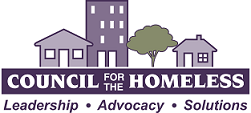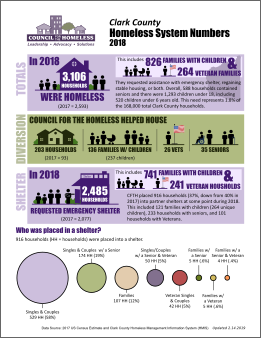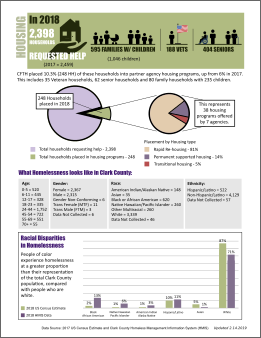By Kate Budd
Identifying outcomes, collecting data and measuring progress are critical components to reducing homelessness locally and across the nation. The two most common ways data are collected is through the Homelessness Management Information System (HMIS) and the Point-in-Time (PIT) Count. The HMIS system collects client-level data and allows communities to identify the number of people needing assistance due to homelessness and the number of people who received assistance and what type, in an unduplicated way. This can be collected for any time frame. The Point-in-Time Count is a one night snapshot of the number of people experiencing homelessness. Both are important tools because they track trends, identify current and future system gaps, and inform planning. Both are also required by the U.S. Department of Housing And Urban Development (HUD) and WA State Department of Commerce. While neither data source will ever be 100% correct, we present these numbers as the Best Available Data and continually seek to improve.
Click the thumbnail images below to view the 2018 Clark County Homeless Crisis Response System Numbers.
The data in the report include several key takeaways:

The number of Veteran households experiencing homelessness greatly increased between 2017 and 2018.
- This can primarily be attributed to the Clark County Veteran Assistance Center, a common Veteran service access point, beginning to enter data into the HMIS system in 2018. Better data equals more accurate information about the need.

513 additional adult only households (single adults, parent with adult child and couples) identified as homeless and sought assistance than in 2017.
- For context, during this same time period, the Fair Market Rate for a one-bedroom unit
rose 8% from to 2017 $1,132 per month and the minimum Social Security payment rose 2% in the same time period to $771 per month.

45 fewer households with children under 18 (Families), identified as homeless and sought assistance than in 2017. This includes 148 fewer families who sought long-term housing.
- This reduction can be attributed to the increasing number of housing programs for
families experiencing homelessness, including those through the school districts, Vancouver Housing Authority and Council for the Homeless (CFTH). In addition, the increase in the amount of assistance keeping families housed through the City of Vancouver Affordable Housing Fund and a partnership between CFTH, Evergreen Public Schools and Foundation for Vancouver schools.

203 Family and Senior (62+) households experiencing homelessness were kept out of the system by stabilizing them in housing and diverting them from shelter and more costly housing programs. This Diversion approach is through a special initiative of Council for the Homeless.

408 more households experiencing homelessness sought emergency shelter when compared to 2017 and 37% of them were able to be placed in a residential or winter shelter.
- This percentage is comparable to 2017 (40%) because there were zero new shelter beds
opened during the one-year period.

134 additional households were placed in long-term housing programs in 2018, than 2017.
- This is a considerable increase, thanks to increased programmatic resources and affordable housing development through Clark County, Vancouver Housing Authority, City of Vancouver and philanthropic partners. Much more permanent housing programs and affordable housing needed.

In total, 439 households were placed in stable, permanent housing across all system programs.
If households are placed into stable, permanent housing through system programs, over 86%, do not re-enter into the homeless crisis response system again within two years. Our community needs additional programs across the entire homeless crisis response system to increase this number. From outreach teams skilled at engagement, shelter with low-barrier access, to permanent housing programs, including Rapid Re-housing and Permanent Supportive Housing, more are needed. The additional resources are called for in the Clark County Homeless Action Plan.
The programs the community has are working well, there are just not nearly enough of them. Help change this by learning all you can about homelessness, advocating for policies that bring about solutions, and giving of your time and money.
Lastly, remember to be kind to those living on the street, many are waiting for one of these programs to have a space for them.


